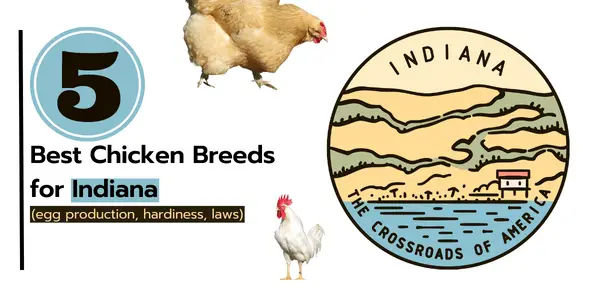The popularity of backyard chicken farming is on the rise, and for good reason.
Not only do chickens provide fresh eggs, but they can also be a fun and rewarding addition to any backyard.
If you’re considering getting started with backyard chicken keeping in Indiana, it’s important to choose the right breed for your needs.
In this article, we’ll explore the best egg-laying chickens for Indiana, including their:
- suitability for Indiana’s climate
- breed temperament
- cold hardiness
- egg production
- broodiness
- potential health concerns
Indiana has a humid continental climate, which means it experiences four distinct seasons with varying temperatures and precipitation levels throughout the year. If you’re planning to raise chickens in Indiana, it’s important to understand the climate and how it can affect your birds.
In the summer months, from June to August, the temperature typically ranges from 70°F (21°C) to 90°F (32°C) with high humidity levels. While chickens can tolerate heat, it’s important to provide them with shade and access to plenty of clean water to help them stay cool.
In the winter months, from December to February, temperatures drop dramatically, with average highs ranging from 30°F (-1°C) to 40°F (4°C) and average lows ranging from 15°F (-9°C) to 25°F (-4°C).
It’s important to provide chickens with a warm, draft-free coop during this time, as well as access to fresh water that hasn’t frozen.
So, without further ado, let’s get started.
Buff Orpington
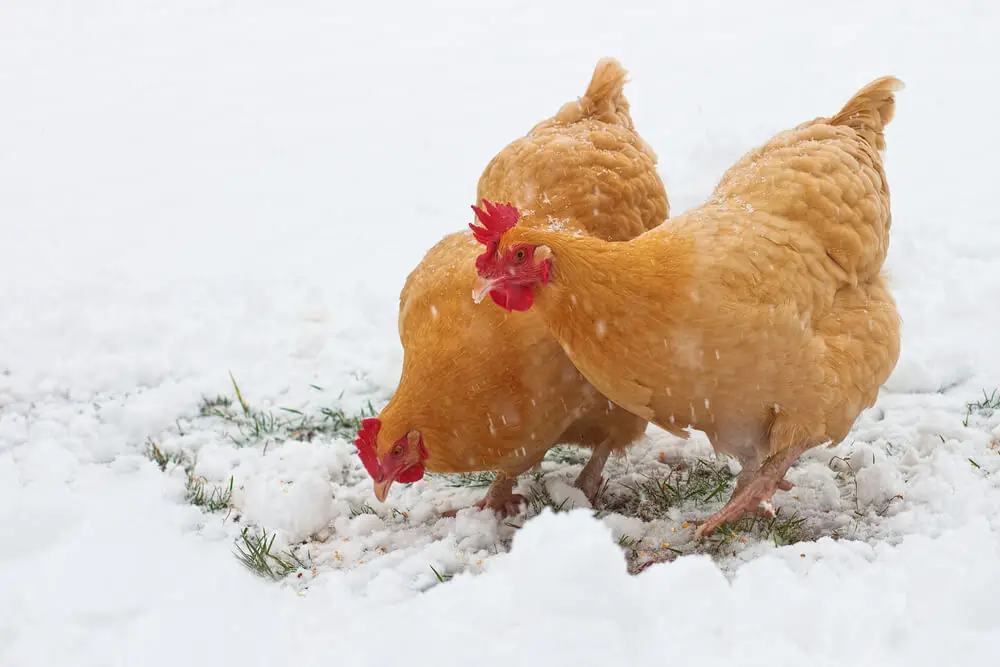
There’s a reason why Buff Orpingtons are one of the most popular breeds for home farming in Indiana: they produce a lot of eggs.
The chicken breed is known for its resiliency and ability to perform well in harsh environments, which makes them an excellent choice for Indiana’s climate.
In addition, Buff Orpingtons are noted for having a calm demeanor, which makes them an excellent option for households that include young children.
Buff Orpingtons are regarded to be moderate layers since they lay between 175 and 200 eggs per year on average. This range of output puts them in the middle of the layering spectrum.
Buff Orpingtons are known to be one of the most broody breeds of chicken.
They will often sit on a clutch of eggs until they hatch, which can be several weeks. This can result in a disruption of egg production during that time, as well as potentially causing health issues for the hen if she is not provided with adequate food and water while brooding.
In addition to the standard Buff Orpington, there are also Black, Blue, and White Orpington variants.
These variants are similar in temperament and egg production but vary in appearance.
Black Orpingtons have black feathers, while Blue Orpingtons have a bluish-gray feather color. White Orpingtons have white feathers and can be more susceptible to sunburn due to their light color.
Red Sex Links
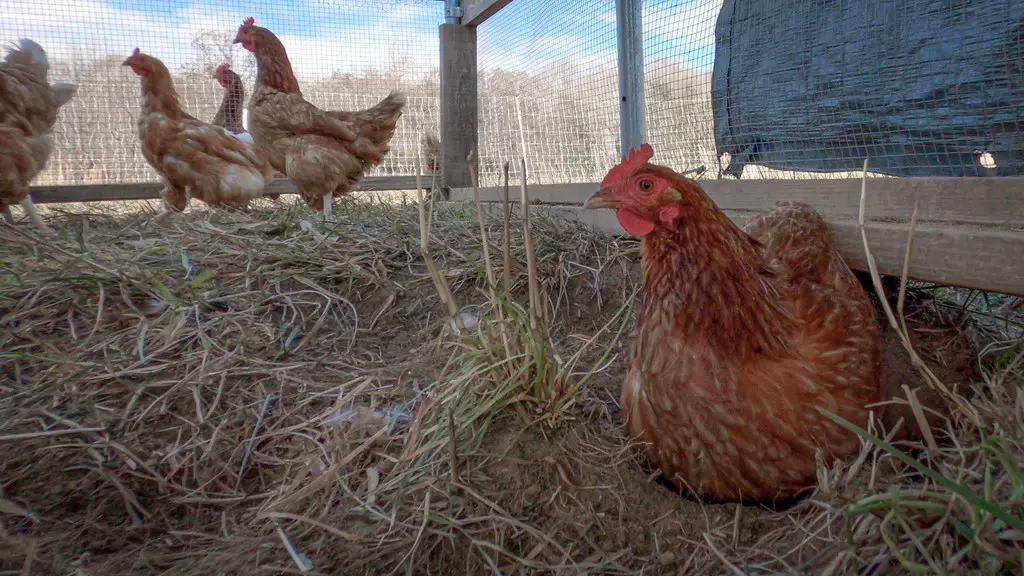
Red Sex Links are another great choice for backyard farming in Indiana.
They are a crossbreed between Rhode Island Red Rooster and White Rock hen and are known for their hardiness and productivity.
Great egg layers, producing around 280-320 eggs per year. They are also friendly and easy to handle, making them a great choice for families.
Red Sex Links are not typically known for their broodiness, as they have been bred specifically for high egg production. While they may occasionally go broody, it is not common behavior for this breed.
This is a crossbreed, so there are no typical variants of this breed. However, there may be variations in the specific breeds used in the crossbreeding process, which can impact appearance and egg production.
Turkens (Naked Necks)
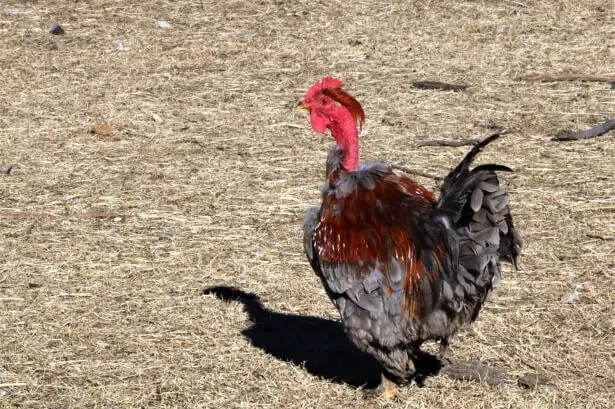
Turkens, also known as Naked Necks, are a unique breed that is well-suited for Indiana’s climate.
They have a unique appearance, with a bare neck and head, and a feathered body.
Despite their unusual appearance, Turkens are hardy birds that can tolerate cold temperatures well. They are also great egg layers, producing around 200 eggs per year.
Turkens are known for their friendly temperament, making them a great choice for families with children.
Hardy birds – not prone to any specific health concerns or diseases. However, they are known for their bare necks and heads, which can make them more susceptible to sunburn and frostbite in extreme temperatures.
It’s important to monitor their exposure to extreme temperatures and provide appropriate shelter to prevent these issues.
Naked neck hens are not typically known for their broodiness, as they have been bred specifically for egg production and hardiness.
Barred Plymouth Rock
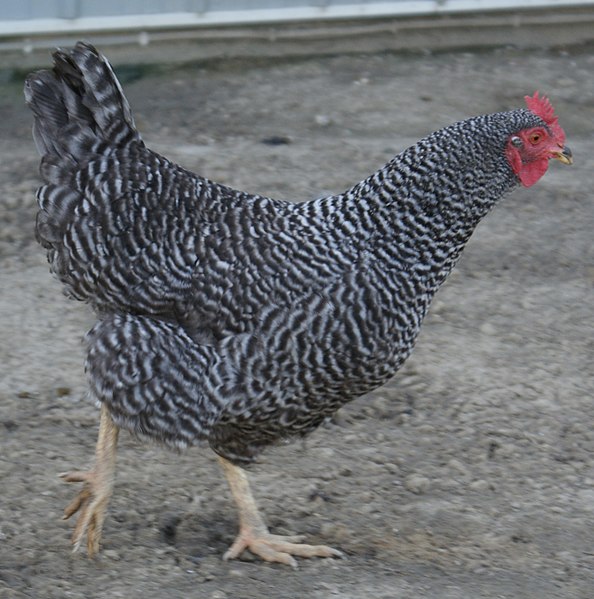
A solid choice for Indiana’s humidity.
They are hardy birds that can tolerate cold temperatures well and are known for their friendly temperament.
Barred Plymouth Rocks are also great egg layers, producing around 200 eggs per year.
They have a distinctive black and white striped pattern, making them a great choice for those looking for a visually appealing breed.
Barred Plymouth Rocks are generally hardy birds that are not prone to any specific health concerns or diseases. However, like all chickens, they are susceptible to parasitic infections such as lice and mites.
Plymouth Rock hens are known to be moderately broody, meaning they may go broody occasionally but not to the extent of a breed like the Buff Orpington. This behavior can be managed by removing eggs from the nest box regularly.
Leghorn
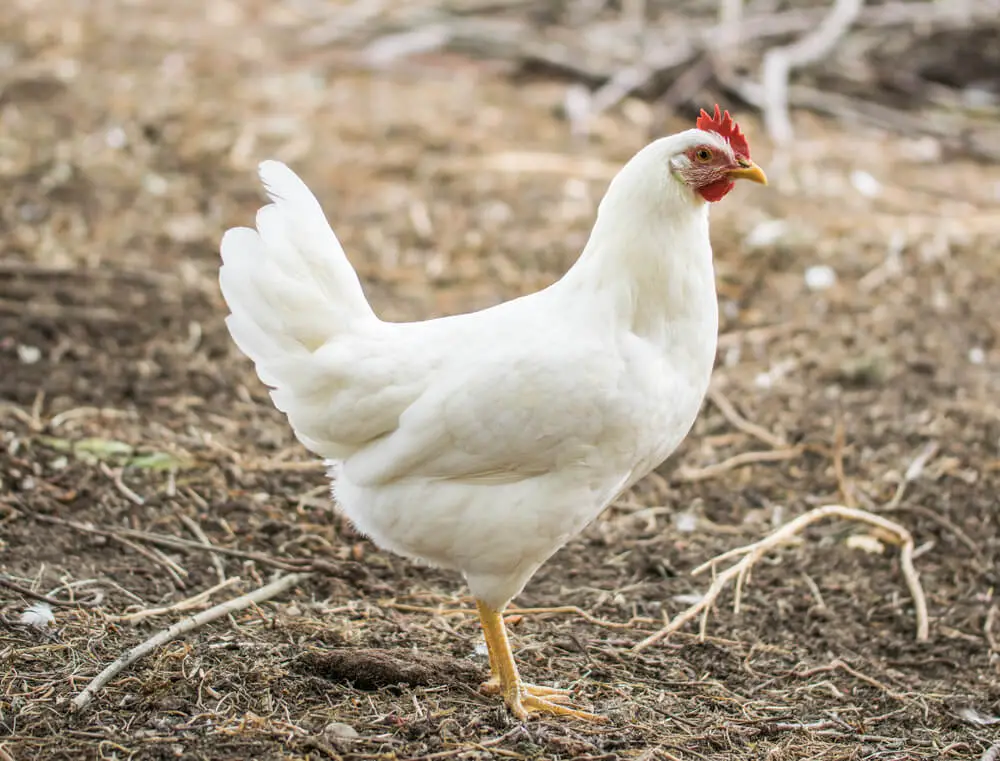
Best egg-laying hen for Indiana, for sure.
They are a hardy breed that can tolerate cold temperatures well and are known for their high egg production.
Leghorns are considered to be excellent layers, producing around 280-320 eggs per year.
They are also known for their active and energetic temperament, making them a great choice for those who enjoy watching their chickens run around and explore.
Hardy birds – are not prone to any specific health concerns or diseases.
However, they are known for their high energy levels, which can lead to stress and overexertion if they are not provided with enough space to run around and exercise.
Leghorns are known to be one of the least broody breeds of chicken. While they may occasionally go broody, it is not common behavior for this breed.
| Breed | Climate Suitability | Temperament | Egg Production | Broodiness | Health Concerns/Diseases |
|---|---|---|---|---|---|
| Buff Orpington | Cold-hardy | Gentle | 200-280 per year | High | Respiratory issues |
| Red Sex Links | Adaptable | Friendly | 280-320 per year | Low | Parasitic infections |
| Turkens | Cold-hardy | Friendly | 200-260 per year | Low | Sunburn, frostbite |
| Barred Plymouth Rock | Cold-hardy | Friendly | 200-280 per year | Moderate | Parasitic infections |
| Leghorn | Cold-hardy | Energetic | 280-320 per year | Low | Stress, overexertion |
What are the laws regarding backyard chicken farming in Indiana?
In Indiana, the laws regarding backyard chicken farming vary by city and county.
It’s important to check with your local government to determine what the regulations are in your area. Some common regulations include limits on the number of chickens you can keep, requirements for coop size and construction, and restrictions on roosters.
Here are a few examples of cities in Indiana that allow backyard chickens:
- Indianapolis: Residents can keep up to 12 hens and one rooster.
- Fort Wayne: Not allowed within the city limits(page 16, section 91.019).
- Bloomington: Residents can keep up to 5 hens, but no roosters, on properties of at least one acre.
- Lafayette: Residents can keep up to four hens, but no roosters, guinea hens, or peacocks on properties of at least 6,000 square feet.
It’s important to note that these regulations may change, and it’s always a good idea to check with your local government before keeping chickens on your property.
How many eggs can I expect my chickens to lay per year?
The number of eggs your chickens will lay per year depends on the breed, as well as other factors such as age and diet. Generally, the breeds mentioned above are considered to be good egg layers, with production ranging from around 200-320 eggs per year.
What should I do if my chickens get sick?
If you suspect that your chickens are sick, it’s important to isolate them from the rest of your flock and seek veterinary care. Some common signs of illness in chickens include lethargy, loss of appetite, abnormal droppings, and respiratory issues.
Early intervention can help prevent the spread of illness to the rest of your flock.
How many chickens should a beginner start with?
As a beginner, it’s recommended to start with a small flock of chickens, typically around 3-5 birds. This allows you to gain experience and learn how to properly care for them before expanding your flock.
Starting with too many chickens can be overwhelming and increase the risk of mistakes or health issues. It’s also important to consider the size of your property and the amount of space you have available for a coop and run.
Conclusion
Choosing the right chicken breed is important when starting a backyard flock in Indiana.
By considering factors such as climate suitability, temperament, egg production, and potential health concerns, you can select a breed that will thrive in your backyard.
With the right care and attention, backyard chickens can be a fun and rewarding addition to your household, providing fresh eggs and hours of entertainment.
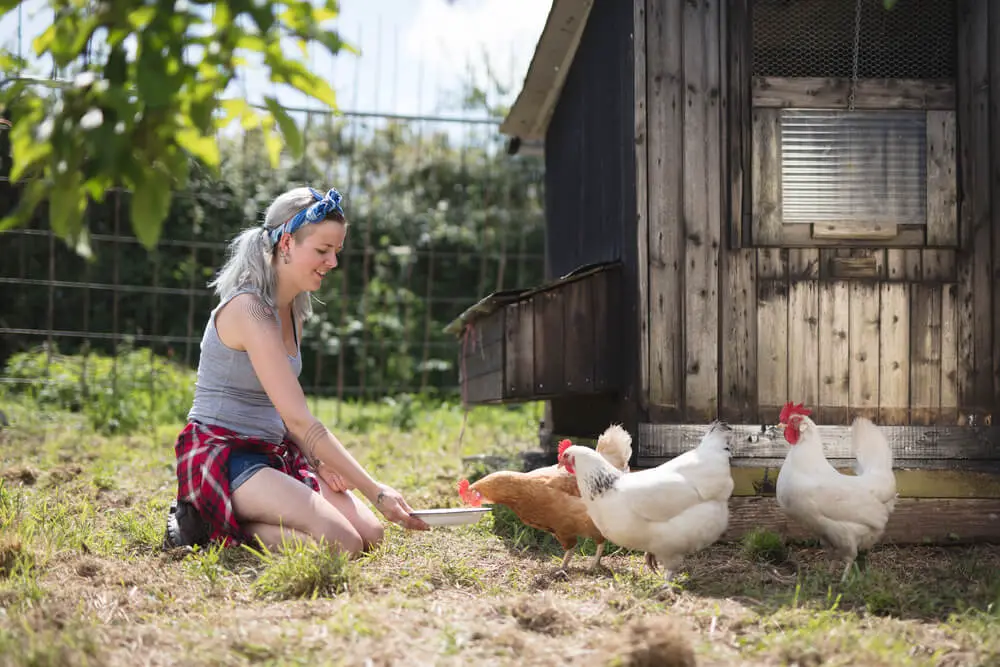
Shannon Stansberry has been engaged in the business of raising chickens for more than 12 years. In 2016, she accomplished the Agriculture & Natural Resources program at Mt. San Antonio College. At present, she tends to more than 80 chickens on her 4-hectare farm. Shannon regularly shares her insights and experience on how to raise healthy and contented chickens on the platform Typesofchickens.com
